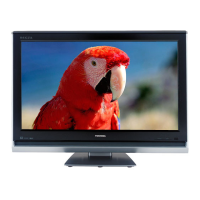
Do you have a question about the Toshiba Regza 42LX196 and is the answer not in the manual?
| Screen Size | 42 inches |
|---|---|
| Display Type | LCD |
| Backlight Type | CCFL |
| Brightness | 500 cd/m² |
| Response Time | 8 ms |
| HDMI Ports | 3 |
| USB Ports | 1 |
| Component Video Input | 1 |
| Composite Video Input | 1 |
| Aspect Ratio | 16:9 |
| Viewing Angle | 178° |
| Standby Power Consumption | 0.5 W |
| Resolution | 1920 x 1080 |
| Audio Output | 20 W |
| PC Input | 1 |
Welcomes the user and introduces the TV.
Lists the main features of the new Toshiba LCD TV.
Provides a step-by-step guide for initial TV setup.
Details the TV's front and side panel controls and connections.
Details the TV's back panel connections and their functions.
Instructions for installing batteries in the remote control.
Information on the optimal operating range for the remote control.
Provides an overview of the remote control buttons and their functions.
A chart detailing remote control key functions across different device modes.
Guides on programming the remote to control other devices.
Steps to set up device codes for remote control programming.
Process to find device codes when the exact code is unknown.
Feature to lock remote control volume to a specific device mode.
Resets programmed features and volume lock to default.
Lists device codes for various brands to program the remote.
Explains the layout and structure of the TV's main menu system.
Details the layout of the Setup and Installation menus.
Describes the layout of the THINC™ network feature menu.
Explains how to use remote/control panel buttons to navigate menus.
Instructions to select the on-screen display language.
How to set antenna/cable inputs for ANT 1 and ANT 2.
Guides on programming channels into memory for easier tuning.
Steps to automatically detect and store active channels.
Instructions for manually adding or deleting channels from memory.
How to set the TV's internal clock for accurate time display.
Configures audio output settings for HDMI connections.
How to access and view CableCARD™ menu information.
Displays signal meter for ANT 1 and ANT 2 digital inputs.
How to view system status, product, and software information.
Procedure to reset all TV settings and channels to factory defaults.
Guides on selecting the video input source for viewing.
Instructions to label video input sources with device names.
Explains how to tune channels using various methods.
How to navigate and tune channels using the Channel Browser.
Setting up and managing a list of favorite channels.
Configuration of the browser.
How to tune channels/inputs using the Browse mode.
How to tune channels/inputs using the Select mode.
Managing history.
How to tune to the next programmed channel in memory.
Instructions for tuning to specific channels directly.
How to switch between the last two tuned channels.
How to memorize and return to a specific channel quickly.
How to select different picture sizes for optimal viewing.
Explains the TheaterWide 1 picture size for 4:3 programs.
Explains the TheaterWide 2 picture size for letter box programs.
Explains TheaterWide 3 for letter box programs with subtitles.
Explains Full picture size for 16:9 source programs.
Explains Native size for 1080i signals, showing entire picture.
How to scroll TheaterWide 2 and 3 pictures for hidden areas.
Automatically selects picture size based on input signal.
Sets Cinema Mode to Film for smoother motion from DVDs.
How to use the Picture-Out-Picture (POP) double-window feature.
How to select audio output for the POP window.
How POP displays pictures based on input signal aspect ratio.
How to freeze the picture and return to moving picture.
How to select desired picture settings from four modes.
How to adjust contrast, brightness, color, tint, and sharpness.
How to view and manage closed captioning for programs.
Customizing closed caption display characteristics like color and size.
How to select digital closed caption services if available.
How to mute or reduce the TV's sound volume.
How to switch between audio tracks on digital channels.
How to select stereo or second audio program (SAP) broadcasts.
How to adjust bass, treble, and balance for audio quality.
Feature to limit volume changes between sources.
Selects optical audio output format for digital audio systems.
How to turn off the TV's internal speakers.
Accesses features like rating blocking, input lock, and panel lock.
How to enter the PIN code to access the Locks menu.
Steps to change the existing PIN code for security.
How to block programs based on TV ratings using V-Chip.
How to download an extra rating system for content blocking.
How to block specific channels from being tuned.
How to temporarily unlock a program exceeding rating limits.
How to lock or unlock video input sources.
Sets a time limit for video game play, activating Input Lock.
Locks TV control panel buttons to prevent setting changes.
Sets a timer for the TV to turn off automatically.
Schedules the TV to turn on and off automatically at set times.
Adjusts image settings when connecting a PC to the TV.
Selects PC audio output mode or mutes PC sound.
Shows current input, channel, time, and other status details.
Explains the feature that automatically turns off the TV.
How the TV returns to the last mode after power interruption.
Accesses advanced picture settings like dynamic contrast and noise reduction.
Adjusts contrast dynamically for better picture quality.
Reduces visible interference in the TV picture.
Reduces interference caused by MPEG compression.
Changes picture color temperature (cool, medium, warm).
Adjusts hue, saturation, and brightness of six colors.
Reduces frame delay for smoother video game play.
Provides a thrilling surround sound experience with SRS technologies.
Enjoy virtual surround sound from the TV's speakers.
Steps to connect the TV to a home network via Ethernet.
Guides on setting up the TV's network address automatically or manually.
Detailed steps for manually configuring network address settings.
Guides on setting up file sharing on a PC for the TV.
Lists operating systems compatible with TV file sharing.
Detailed steps for setting up file sharing on Windows XP.
Detailed steps for setting up file sharing on Windows 2000.
Guides for configuring the TV to access shared PC files.
Steps to set up the TV to access the networked PC as a home server.
How to view JPEG photos and play MP3 files from a networked PC.
Details specifications for JPEG and MP3 files supported by the TV.
Specifies limits for files and folders on a networked PC.
How to use the Picture Viewer to display JPEG files.
Steps to access JPEG files stored on a networked PC.
How to view JPEG files on the TV, including rotation and slide show.
Sets the interval between pictures in a slide show.
How to use the Audio Player to listen to MP3 files from a PC.
Steps to access MP3 files stored on a networked PC.
How MP3 audio files are played back on the TV.
Guides for setting up e-mail scheduling for recordings and reminders.
Lists information and services needed for e-mail scheduling setup.
Guides for setting up e-mail scheduling for recordings and reminders.
Configures SMTP authentication for sending emails to the TV.
Lists and explains error codes encountered during email testing.
Explains each field in the E-mail Scheduling Setup window.
Instructions for sending e-mails to schedule recordings/reminders.
Explains the format and tags for request e-mails.
Provides sample e-mails for ADD, DELETE, GET, and HELP commands.
Explains the reply e-mails received from the TV after requests.
How to modify scheduled recordings or reminders via e-mail.
Initial problem diagnosis.
Solutions for picture-related problems like fuzzy images or no picture.
How to reduce visible interference or "snow" in the picture.
Solutions for problems related to sound output or lack thereof.
Troubleshooting steps for remote control malfunctions.
Solutions for problems with tuning channels or memory.
Troubleshooting closed caption display problems.
Troubleshooting issues related to V-Chip rating blocking.
Solutions for problems encountered during recording.
Troubleshooting problems with the Audio Player over the network.
Guides for resolving home network setup and connection problems.
Troubleshooting problems related to e-mail scheduling setup.
Explains the meaning of the TV's front LED lights.
Lists the technical specifications of the TV model.
Details the limited warranty terms for LCD TVs in the U.S.
Details the limited warranty terms for LCD TVs in Canada.
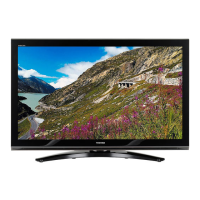
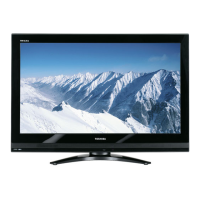
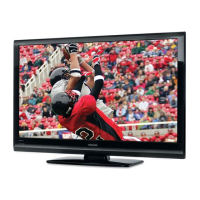
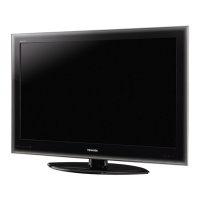
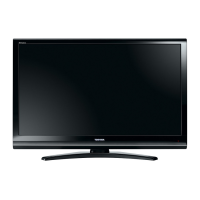
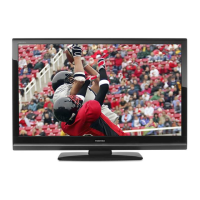
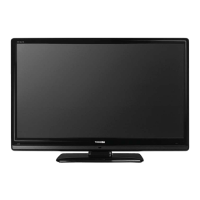
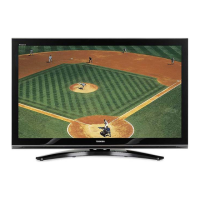

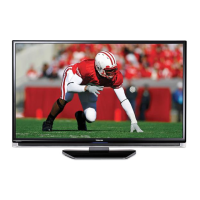
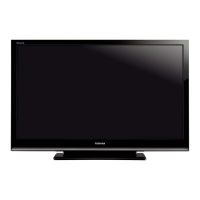

